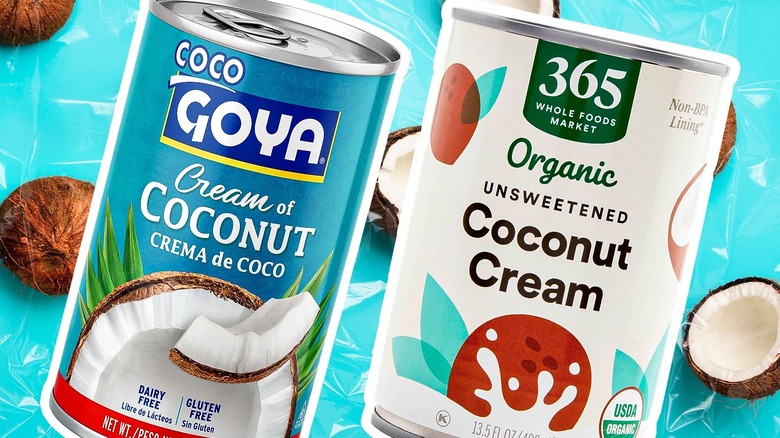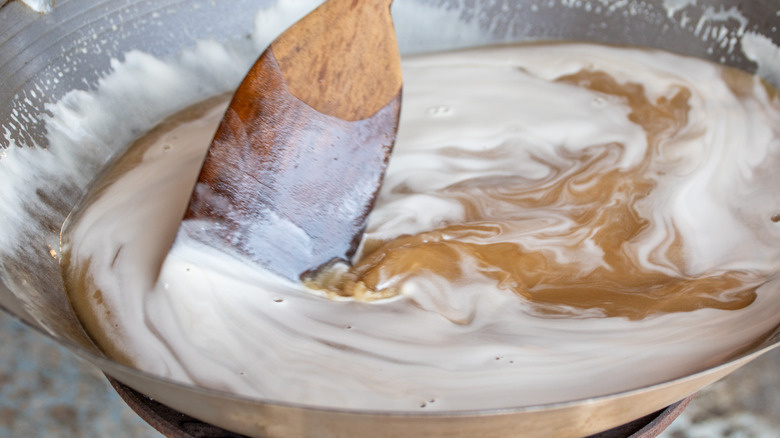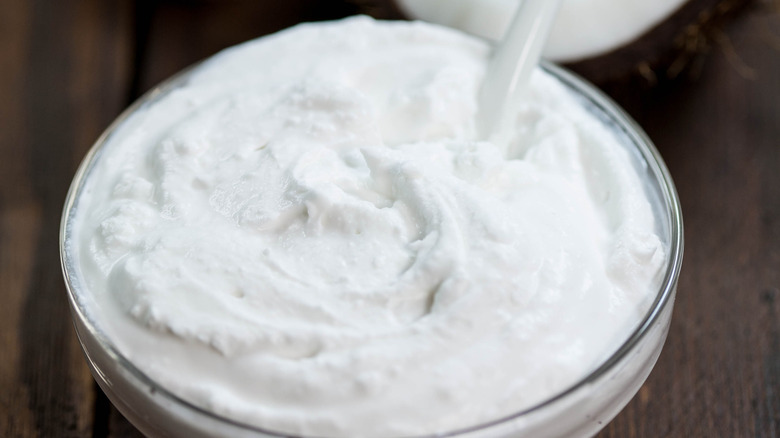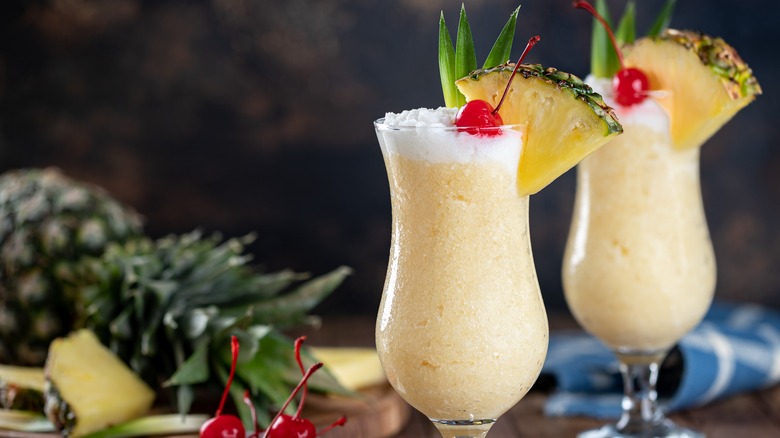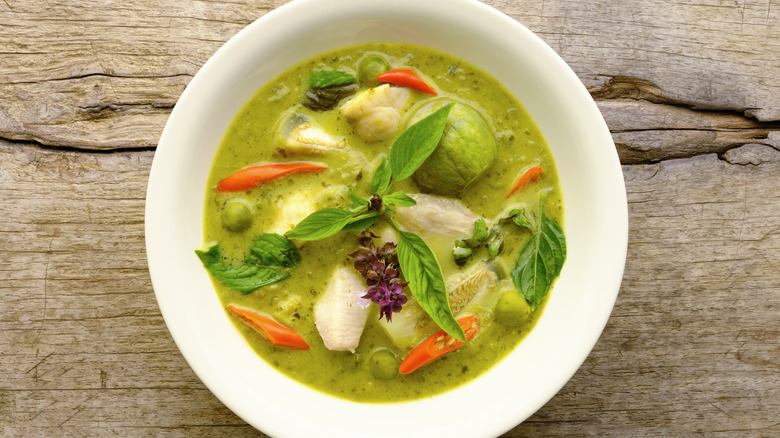The Difference Between Cream Of Coconut And Coconut Cream
Mention canned food, and corn, tuna, or green beans likely come to mind. However, the preservation method covers a large range of options, backed by its advantages of halting enzyme activity and preventing bacterial growth. Just take a look at coconut products: coconut milk, cream of coconut, and coconut cream, all tinned and ready for use.
The latter two are especially easily confused. With similar names, branding, and price points, a mix-up is nearly inevitable. However, they're best not mistaken, as each product exhibits a unique flavor and textural palate. Cream of coconut is thick, rich, and sweet, most notably featured as the sugary element in a Piña Colada. Meanwhile, coconut cream doesn't have any sugar element, instead crafted as a high-fat mixture of coconut solids, water, and, occasionally, a stabilizer. A tasty product with many uses, it invokes dishes with a completely different character and often serves as a thickener or whipped cream replacement.
What is cream of coconut?
Cream of coconut is sweet and syrupy, with a consistency reminiscent of condensed milk. The widely distributed rendition is a relatively new invention, dating back to 1948. It was created by Puerto Rican agricultural professor Don Ramón López-Irizarry, who studied ways to create storage-friendly creamy coconut products. He extracted the interior flesh and blended it with water — the same process as coconut milk and cream. His crucial step was adding cane sugar and stabilizers, which allowed him to later establish the Coco López brand.
Nowadays, manufactured cream of coconut is distributed in squeeze bottles in addition to cans. Note that these two products contain varying ingredients and textures. The bottled version has a more liquid syrup-like consistency for ease of pouring but is accompanied by a slightly more artificial flavor. Meanwhile, the canned version of cream of coconut has a richer taste and a much thicker texture.
Although cream of coconut is readily found in stores, it can also be crafted at home. The product starts with a mixture of coconut milk, sugar, and salt, which is mixed over low heat. The resultant emulsified mixture is smooth, dense, and flavorful, lending it myriad uses in cocktails, baking, and other sweet treats.
What is coconut cream?
Versatile coconut cream is analogous to what whipping cream is for milk. It's composed of only coconut flesh and water but has a higher fat content compared to coconut milk. As per its name, the texture is palatably creamy, although less substantial than canned cream of coconut. Its flavor offers a bold dose of coconut taste — even more than coconut milk — without any further additives.
Due to its composition, coconut cream is an easily perishable product, hence its storage in canning. You may have even noticed some accidental coconut cream formed in a can of coconut milk. When the product is separated, it's the fatty layer of white floating on top. This substance can be skimmed to craft coconut cream. Alternatively, others employ a precise coconut extraction method, mixing approximately four times more flesh than water to make a delectable result. Regardless of the process, coconut cream is useful and easy to find, meaning it's always worthwhile to have a can on hand.
Cream of coconut's sweetness adds an essential touch to tropical cocktails
Since cream of coconut is intrinsically sugary, it's not surprising that it functions as a sweetener in many applications. Plenty will purchase it for its role in cocktails since it imparts coconut flavor and thickness in addition to sugar, which coconut cream cannot accomplish. Cream of coconut is especially intertwined with the Piña Colada since it led to the creation of the drink. It appears in most renditions of the cocktail, as well as in the beloved Painkiller, which also integrates orange juice and nutmeg. Additionally, it's classically found in a coquito, an eggnog-like cocktail.
Nowadays, there is a wave of new creative slings that feature the product, like a tropical-tinged pisco sour and a range of other colada riffs. Whether the drink involves Green chartreuse or bitters as a base, the cream of coconut adds a definitive tropical character. Due to its density and flavor, cream of coconut is used in a proportion similar to syrups. A cocktail will incorporate only around an ounce or an ounce and a half, meaning a purchased container can make up to two dozen servings.
Coconut cream adds richness to varied culinary applications
While cream of coconut is all about imbuing a dominant note of coconut, sugar, and texture, coconut cream has a more accessible palate. It's especially useful as a rich addition to curries calling for coconut milk, like a Thai chicken curry or Massaman since it'll thicken them while still imbuing the same flavor. The ingredient is also similarly used to make a thicker Malaysian Laksa as well as other soups and stews with a Southeast Asian palate.
It can also be employed as a cooking base, albeit on lower heat. Preparing aromatics like peppers and onions in a fatty substance is a convenient method to initiate the preparation of a coconut-flavored sauce. It can also be added to stir-fried vegetables after an initial oil-based sear. In the dessert realm, coconut cream has useful properties as a vegan whipped cream substitute. It can be a flavored dollop atop a milkshake or cake, a thickener in a smoothie, or turned into a pudding.
